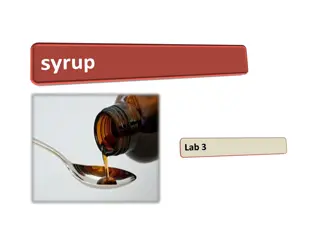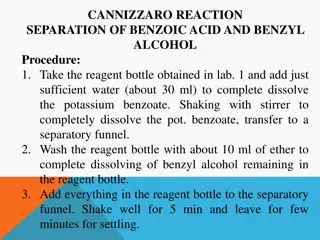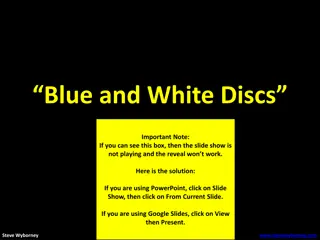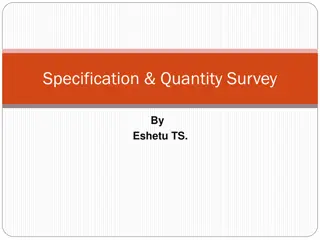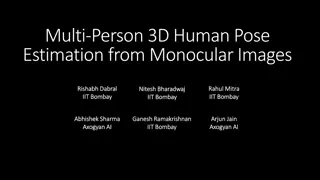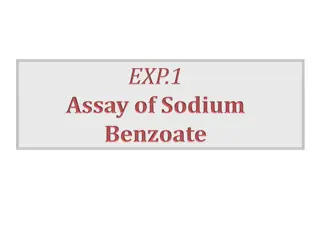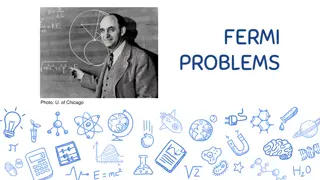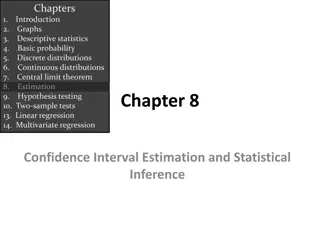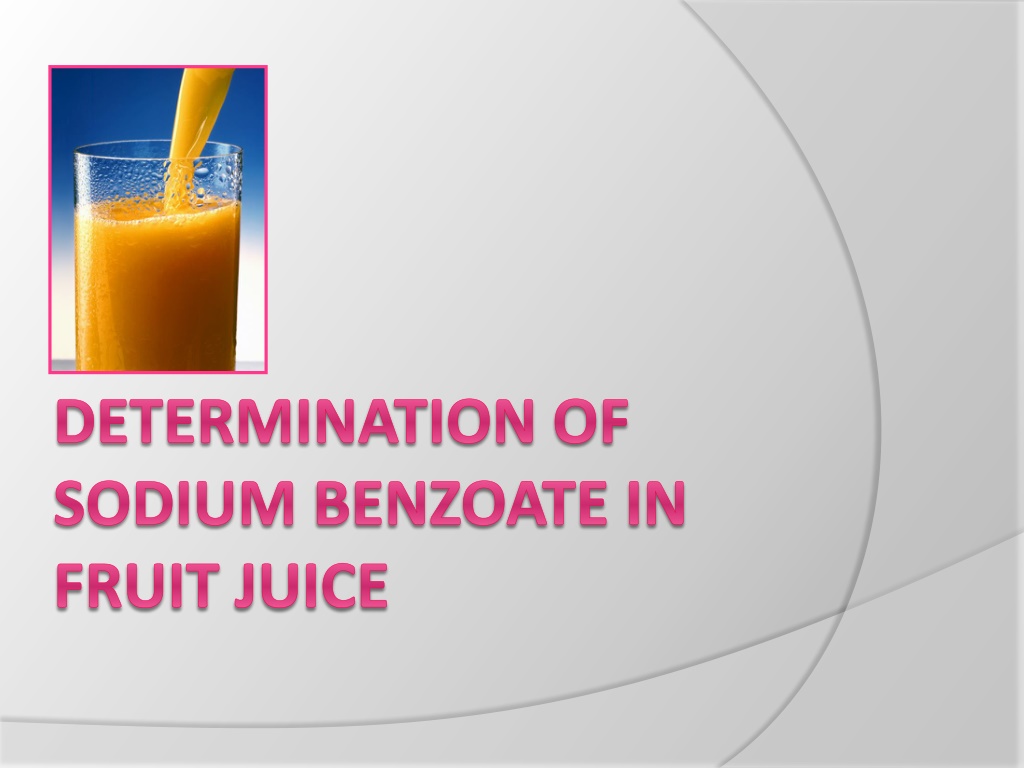
Determining Sodium Benzoate Concentration in Fruit Juice
Discover the process of estimating benzoate concentration in fruit juice using sodium benzoate as a preservative. Learn about the role of preservatives, examples like benzoic acid, and the impact of sodium benzoate on juice taste. Explore the principle behind the extraction and titration methods involved in this determination.
Download Presentation

Please find below an Image/Link to download the presentation.
The content on the website is provided AS IS for your information and personal use only. It may not be sold, licensed, or shared on other websites without obtaining consent from the author. If you encounter any issues during the download, it is possible that the publisher has removed the file from their server.
You are allowed to download the files provided on this website for personal or commercial use, subject to the condition that they are used lawfully. All files are the property of their respective owners.
The content on the website is provided AS IS for your information and personal use only. It may not be sold, licensed, or shared on other websites without obtaining consent from the author.
E N D
Presentation Transcript
DETERMINATION OF SODIUM BENZOATE IN FRUIT JUICE
Objective To estimate the concentration of benzoate in fruit juice.
Preservatives A substance which when added to food is capable of inhibiting, retarding or arresting the process of fermentation, acidification or other decomposition of food Used to prevent and retard the microbial spoilage of food
Examples of preservatives Benzoic acid Sodium benzoate Potassium benzoate Sorbic acid Potassium sorbate Propionic acid Sodium propionate Calcium propionate The inhibitory action of preservatives is due to their interfering with the mechanism of cell division, permeability of cell membrane and activity of enzymes.
Sodium benzoate Sodium benzoate(MW = 144) is a preservative. As a food additive, sodium benzoate has the E number E211. It is bacteriostatic and fungistatic. It is most widely used in acidic foods such as salad dressings (vinegar), carbonated drinks (carbonic acid), jams and fruit juices and pickles (vinegar). It is also used as a preservative in medicines.
Sodium benzoate When added in high concentration it affects the taste of juice. Sodium benzoate is usually permitted at a concentration of up to 1.3g/l of juice. (not exceed 0.13 %)
Principle The benzoate anion is not soluble in non- polar solvents because of its negative charge. However, in acid solution, benzoic acid is formed. This is neutral & quite non-polar. Moreover, it is soluble in non-polar solvents. Polar (dissolve in water) Nonpolar (dissolve organic solvent)
Principle-continue Benzoic acid is separated from a known quantity of the sample by saturating with NaCl and then acidifying with dilute HCl and extracting with chloroform. The chloroform layer is made mineral acid(inorganic acid) free and the solvent is removed by evaporation. The residue is dissolved in neutral alcohol and the amount of benzoic acid is determined by titration against standard alkali (0.05 M NaOH) using phenolphthalein as an indicator.
Method: Weight 10 g of sample into a beaker and add 1 ml of 10% NaOH solution and 12 g NaCl. Add sufficient water to bring the vol. up to about 50 ml and let it stand for 30 min. with frequent shaking. Add 1 drop of ph.ph (the color will change), add drops of HCl until the color change (disappear), then add excess 3 ml HCl.
Add 25 ml of chloroform. Transfer into separator funnel. Let it stand for 20 min with frequent shaking. Transfer 12.5 ml of the chloroform layer (lower layer) into a conical flask and evaporate of the chloroform on a steam bath. Add 50 ml of 50% ethanol solution. Titrate with 0.05 M NaOH add 1 drops of ph.ph as indicator. Calculate the amount of sodium benzoate in the sample.
- Calculation: - 1 ml of 0.05M NaOH 0.0072 sodium benzoate ? Ml NaOH ? gm - %of sodium benzoate = (wt. of sodium benzoate / wt. of sample) X 100 - Normal range not exceed 0.13 %




